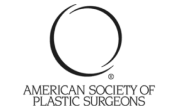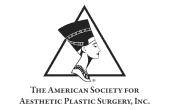
If you think breast implants are the only way to augment the breasts, you might be surprised to learn about an alternative method that has been gaining in popularity nationwide: fat grafting to the breasts. For different reasons, many women are unhappy about the idea of inserting a saline or silicone implant into their breasts.
While they do have their benefits, they aren’t an ideal option for everyone. Fat grafting can provide wonderful results for women who are looking for another way to enhance the size, look, and feel of their breasts.
What Is Fat Grafting?
Fat grafting, or autologous fat transfer, is a procedure most commonly performed in order to restore volume and more youthful contour to specific areas of the face. Wrinkle reduction, improved volume, and plumper lips are among the common benefits of fat transfer procedures.
It has become a popular treatment option in recent years, often performed as an anti-aging measure or in conjunction with other procedures to optimize a patient’s final results. The face, however, is not the only area of the body that can benefit from this all-natural treatment option.
During a fat grafting treatment, the surgeon will select an area of the patient’s body to harvest fat cells. These cells will be processed and cleaned, then injected into the treatment area with a syringe. Because the fat cells are taken from the patient’s body, there is no risk of rejection or allergic reaction to the transfer. Any patient can safely receive a fat transfer in this manner.
How Is Fat Grafting Used in Breast Augmentation?
Traditionally, breast augmentation has most often been performed with the placement of breast implants. While this method has been popular for decades among women looking to enhance their breast size and shape, it is not always ideal for everyone. Some women hesitate to have foreign items placed inside their bodies.
While implants are safe to use and carry very little risks for patients, this might not be enough of a guarantee for some potential patients. Instead of implants, a surgeon may recommend fat grafting for the breasts to these women.
So how can added fat really help create larger breasts? This method cannot provide the dramatic jump that implants can, such as going from an A-cup to a D-cup overnight, but they can definitely have a lasting impact.
The procedure is performed in much the same way as facial fat transfer, beginning with the harvesting of fat cells from a donor area, such as the hips, buttocks, or abdomen. A large amount of fat will be collected then spun to cleanse the fat cells.
Finally, the plastic surgeon will inject the cleansed fat cells into the breasts carefully, so as to evenly increase the size all around. Fat grafting to the breasts has been shown to enhance breasts up to one cup size larger.
Are There Special Benefits to Fat Grafting for the Breasts?
Most surgeons agree that the preferred method of breast enlargement is the surgical insertion of saline or silicone breast implants. With that said, implants just simply aren’t an option for some patients, making the fat grafting procedure the only opportunity they may have to augment their breasts. If fat grafting is on your wish list, here are some of the benefits you can expect from this unique procedure:
- No chance of rejection or allergies. Fat transfers performed using the patient’s own fat carry no risk of a negative reaction to the newly placed fat cells. Breast implants will rarely cause a bad reaction, but they are still foreign items placed inside the body.
- Permanent results. Transferred fat cells will be quickly integrated into the surrounding tissue of the treatment area, meaning that they won’t be broken down and processed by the body like synthetic fillers. Results of most fat grafting procedures are generally permanent. Breast implants, on the other hand, may need replacement during a patient’s lifetime.
- Recovery is shorter. While patients are advised to spend one week of downtime away from work, this recovery is far shorter than that of a traditional breast augmentation.
- No scarring. Because fat transfers are minimally invasive and do not involve the use of incisions, the procedure leaves behind no scars at all.
- Flexibility. If you decide to have breast implants placed later on, your fat transfer will not interfere. You can enjoy the results of both procedures together to achieve your desired breast enhancement results.
These two methods of breast augmentation are so different that they are hard to compare. They both help patients achieve a similar result through different means and each has its own disadvantages.
Choosing breast grafting over implants as a means of augmentation is a personal choice that can be made with the guidance and advice of a fully trained and experienced plastic surgeon. Book a consultation today to discover whether or not this unique method of breast enhancement is the right choice for meeting your personal goals.
Where Can I Learn More About Fat Grafting to Breasts?
Discover what fat grafting can do to improve the size and shape of your breasts and whether they are the right choice for you. Schedule your consultation with Dr. Robert Kessler, a board certified general and plastic surgeon, and find out if you’re a good candidate.
He completed his medical degree with honors from Tufts University in Boston. He also completed a distinguished General Surgical Residency with North Short/NYU in New York, before a Plastic Surgery residency with the US Air Force and the University of Texas.
Today, Dr. Kessler operates two practices in California, has worked as a surgical consultant and surgical assistant on ABC’s Extreme Makeover, and has lectured nationally and internationally on topics including facial rejuvenation, plastic surgery, and body contouring after substantial weight loss.
To schedule an appointment with Dr. Kessler, contact his office, located at 2121 E Pacific Coast Hwy #200, in Newport Beach, CA, by calling 949.644.6544.






